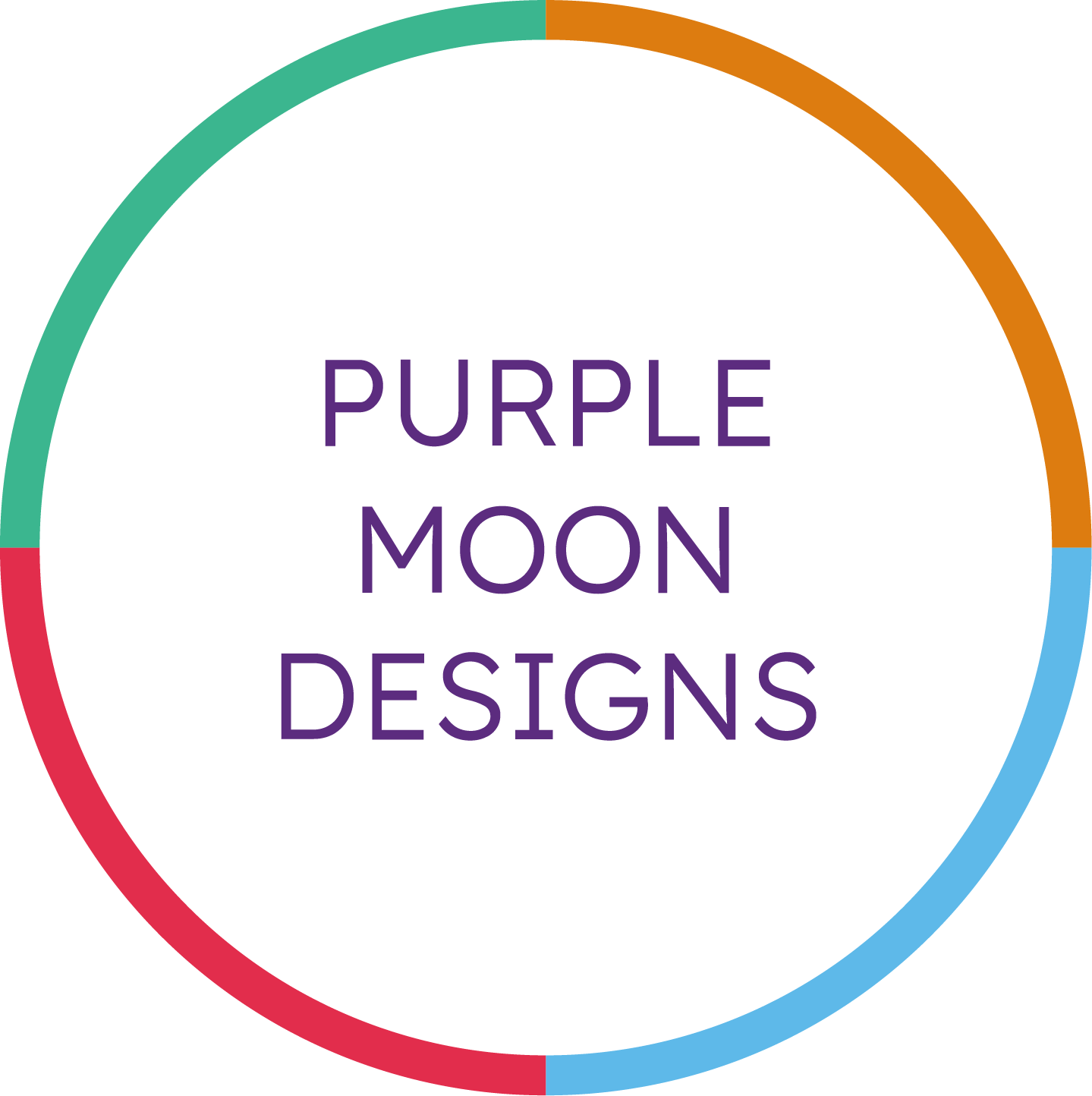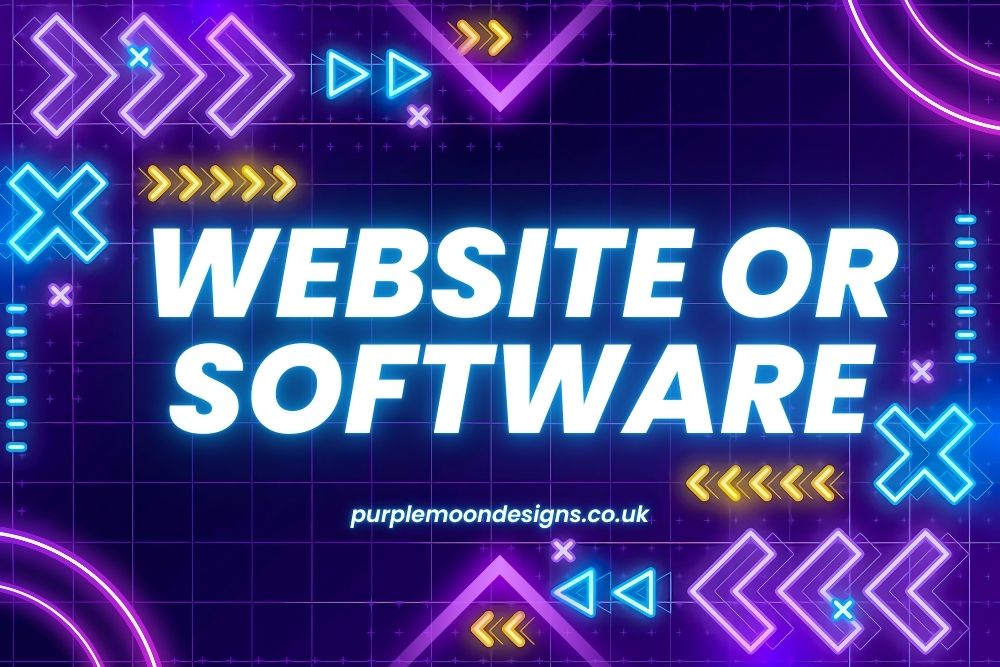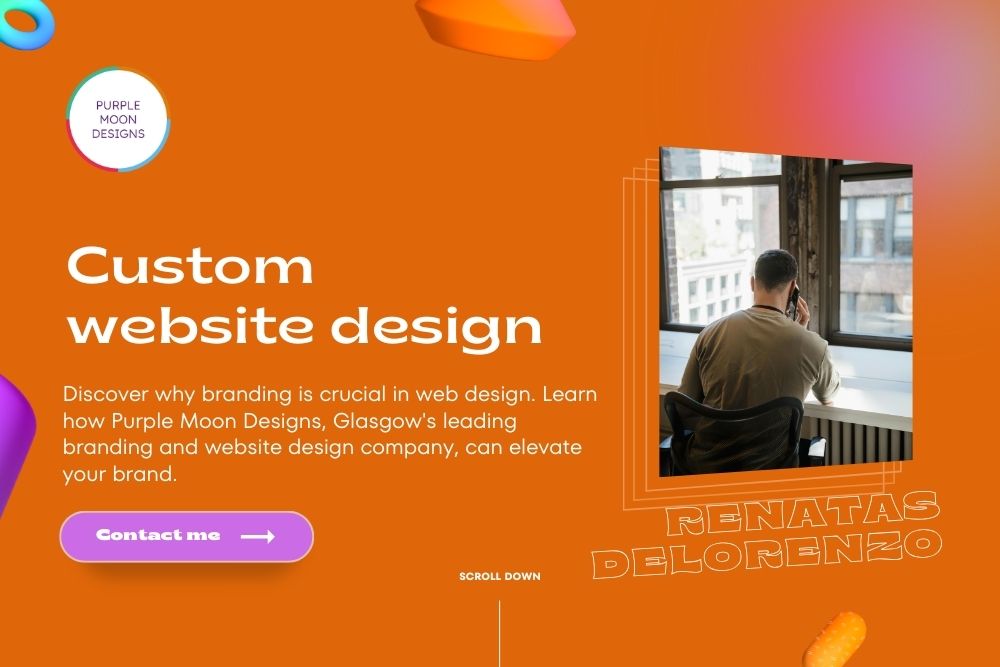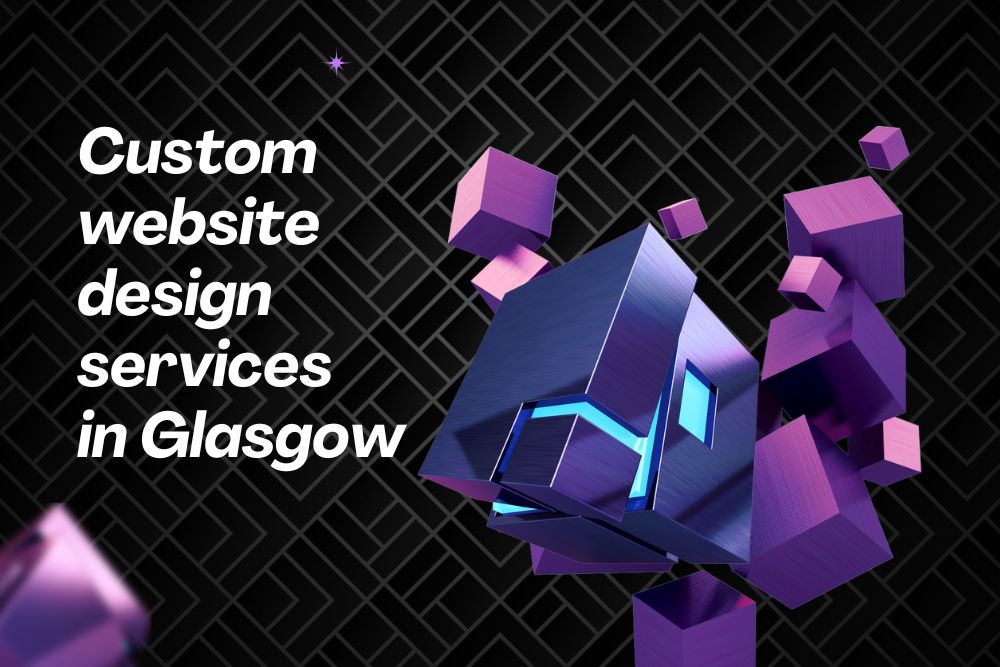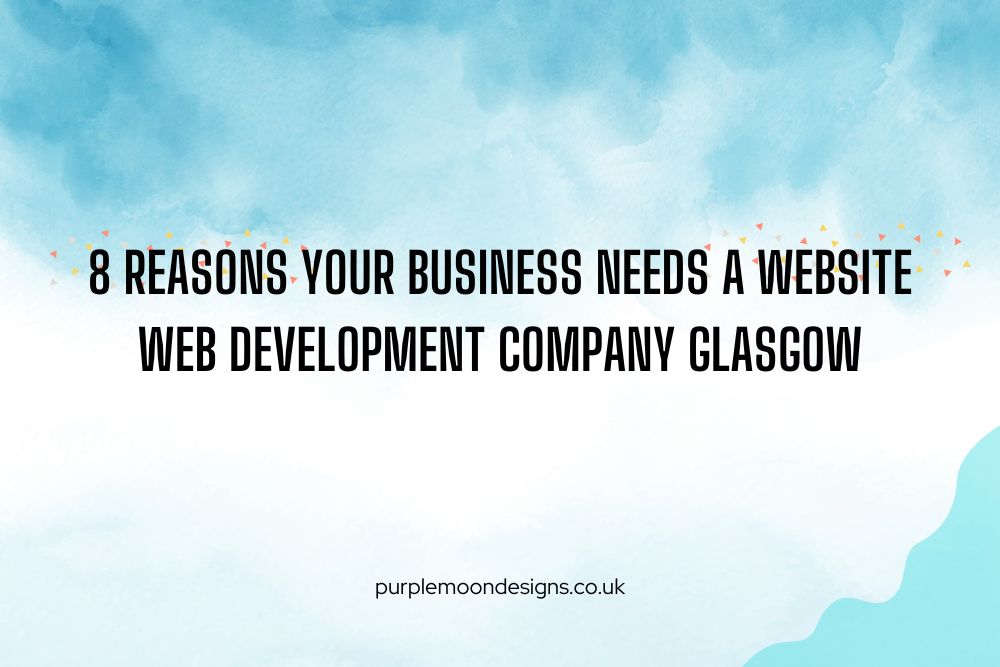Having a well-crafted website is crucial, and mastering the skills to design websites effectively can make all the difference. Whether you’re setting up an online store, showcasing your portfolio, or creating a blog, the right approach to website development can make all the difference. At Purple Moon Designs, a trusted Web Development Company in Glasgow, we guide our clients through the development process that ensures great collaboration, amazing results and all to be done within time and budget. Here’s how:
1. Define Your Website’s Purpose and Goals
The first step is to outline the purpose of your website. Are you looking to engage with local Glasgow customers, showcase products, or provide valuable information to site visitors? This clarity will shape the site’s design and functionality. While most websites are built and designed to generate revenue, not all can sell directly.
Pro Tip: Write down specific goals, such as “increase local customer enquiries” or “highlight project portfolio effectively.” Defining these objectives will help you make clear choices as you go.
2. Assess Your Brand Identity
Assessing your brand identity is a crucial step in creating a website that accurately represents your business. Your brand identity encompasses your company’s values, mission, and unique selling proposition (USP). Having a clear understanding of your brand identity ensures that your website resonates with your target audience.
To assess your brand identity, start by asking yourself the following questions:
- What are my company’s core values and mission? Understanding your core values and mission helps in creating content that aligns with your business ethos.
- What sets my business apart from competitors? Identifying your unique selling proposition (USP) allows you to highlight what makes your business special.
- What tone do I want to convey through my website? Decide whether you want a professional, friendly, or humorous tone to connect with your audience.
- What are my brand’s visual elements? Consistency in logos, color schemes, and typography enhances brand recognition.
By answering these questions, you’ll gain a deeper understanding of your brand identity and be able to create a website that accurately represents your business and appeals to your target audience.
2. Choose a Platform That Meets Your Needs
Selecting the right platform is essential for functionality and growth. Different platforms suit various website types, so consider these options:
Shopify is perfect for e-commerce, with features designed for secure transactions and inventory management. A lot of simple, and fast options available. But there’s a monthly fee to run it. So ensure you’re running a profitable store and account for all additional fees.
WordPress offers extensive customisation, which is ideal for blogs, portfolios, and content-heavy sites. As well as anything super customer like unique booking system, customised item sales, shipping and more. Be careful, as WordPress is not beginner friendly – you need a great website design and website development team to achieve good results.
Wix provides an intuitive, drag-and-drop interface that is suitable for simpler sites with a quick setup. They have low monthly cost and compares closely with SquareSpace and other site builders.
3. Secure a Domain and Reliable Hosting
Your domain name is your unique online address. Choose something that resonates with your brand. Ideally the domain would be as close to your business name as possible, or abreviation. Pair it with reliable hosting to ensure fast load times, security, and 24/7 availability.
Domain Selection:
A short, memorable name will keep your website at the top of users’ minds, recognisable brand and easy to find.
Hosting Providers:
Dependable hosting from providers like SiteGround, GoDaddy or Blue host is crucial for a site that performs well consistently. Not to brag, but we have a solution that works great and is optimised for projects like yours: https://www.purplemoonhosting.co.uk
Plan Your Site’s Layout, Structure, and User Interface
An effective layout provides a smooth user experience with a structure that is easy to navigate across all web pages. Design the site with user experience in mind so visitors find what they’re looking for quickly and easily. Guide your users to see and do exactly what you want. Whether it’s building trust and showing your projects, or a quick call-to-action with a guide, details and lead magnets.
Navigation: Keep the menu simple and logical to guide users through your pages effortlessly.
Brand Consistency: Stick to a color scheme, typography, and design style that match your brand, enhancing the professional feel of your website.
Avoid stock: avoid stock imagery, videos, elements as much as you can. This will help your brand and website stay true to you, your business and your clients.
Leverage a Professional Website Builder and Design Tools
For those without coding experience, website developers and website builders like Elementor (WordPress) and templates from Theme Forest can simplify the process. These tools offer flexibility while maintaining a professional look, which can be customised to match your brand. Please note that these tools are only a temporary solution to your website design. It is best used if you have more time than money to invest. As it won’t last and it does have a learning curve the more custom you want it to be.
Graphic Design Tools: Canva and Adobe Spark make creating high-quality visuals easy, ensuring your site remains visually engaging.
Advanced Options: CSS frameworks, such as Bootstrap, offer more control over a design if you’re familiar with coding, allowing customisation for unique layouts. Ideal for the starter website, but the library might impact your website’s speed.
Optimise for Mobile with Responsive Web Design and SEO
Most user’s access websites through mobile devices, so responsive design is essential. Implementing SEO practices will also help attract visitors by improving visibility in search engine results.
Mobile Responsiveness: Test your website on various devices to ensure it adapts to different screen sizes. Most of us don’t have 16 devices to test it on. The simple life hack you can make your browser window smaller to see how it responds to smaller devices.
SEO: With tools like Yoast SEO (for WordPress), optimise keywords, meta descriptions, and images to boost search engine rankings. For local businesses, consider using terms like “Web Development Service Glasgow” to target your audience. The plugin will give you overall rating for performance and details what to add, what’s missing and some other basic things you can tackle yourself today.
Develop High-Quality Content That Resonates with Your Target Audience
Quality content sets your web page apart, engaging visitors and effectively conveying your message. Whether it’s your homepage text or a blog post, clear and valuable content is essential. There’s a mass debate on whether AI content should be used in your website design. Our advice: everything’s in moderation is fine. You’d need to adjust to make it sound more human, avoid random big words and you’ll be golden.
Content Strategy: Create a plan for updates to keep users engaged, including informative posts or announcements. That is build around content pillars such as news, company information, services and other structure based ideas. This will allow Google and other search engines to index your site well and show to the right people, when they search for you.
Visuals: Use images, videos, and infographics to enrich your site and make information more accessible. If you are a location specific business. You can use this neat trick and embedded coordinates in your images to your location to have better local rankings. It’s a tool called GeoTag and it starts for free: https://tool.geoimgr.com
9. Understand Types of Web Designers
There are several types of web designers, each with their own area of expertise. Understanding the different types of web designers can help you find the right professional for your project.
Here are some common types of web designers:
- Front-end web designers: Specialize in creating the visual aspects of a website, including layout, typography, and color schemes. They ensure that the website is visually appealing and user-friendly.
- Back-end web designers: Focus on the technical aspects of a website, including programming languages, databases, and server-side development. They ensure that the website functions smoothly and securely.
- Full-stack web designers: Have expertise in both front-end and back-end development. They can handle the entire web development process, from design to deployment.
- UI/UX designers: Specialize in creating user interfaces and user experiences that are intuitive and engaging. They focus on making the website easy to navigate and enjoyable to use.
- Responsive web designers: Focus on creating websites that are optimized for mobile devices and other screen sizes. They ensure that the website looks and functions well on all devices.
By understanding the different types of web designers, you can find the right professional to meet your specific needs and create a website that aligns with your vision.
10. What to Look for in a Web Designer
When searching for a web designer, there are several key qualities to look for. Here are some essential characteristics to consider:
- Technical expertise: Look for a web designer with experience in programming languages, such as HTML, CSS, and JavaScript. This ensures that they have the skills needed to create a functional and reliable website.
- Excellent service: Choose a web designer who is responsive, communicative, and willing to listen to your needs. Good communication is crucial for a successful collaboration.
- Portfolio: Review the web designer’s portfolio to ensure they have experience creating websites similar to yours. This gives you an idea of their style and capabilities.
- Responsive web design: Ensure the web designer has experience creating websites that are optimized for mobile devices and other screen sizes. This is essential for providing a good user experience on all devices.
- User experience: Look for a web designer who prioritizes user experience and creates intuitive, engaging interfaces. A good user experience keeps visitors on your site and encourages them to return.
By considering these qualities, you can find a web designer who meets your needs and can create a website that effectively represents your brand.
11. Principles of Good UX Design
Good UX design is essential for creating a website that is intuitive, engaging, and easy to use. Here are some key principles of good UX design:
- Clarity: Ensure that the website’s purpose and navigation are clear and easy to understand. Users should be able to find what they’re looking for without confusion.
- Consistency: Use consistent design elements throughout the website to create a cohesive look and feel. This includes consistent use of colors, fonts, and layout.
- Feedback: Provide feedback to users through interactive elements, such as buttons and forms. This helps users understand the results of their actions.
- Intuitive navigation: Create navigation that is easy to use and understand. Users should be able to move through the website effortlessly.
- Visual appeal: Use visual elements, such as images and typography, to create a visually appealing website. A visually attractive site keeps users engaged and interested.
By following these principles, you can create a website that provides a positive user experience and keeps visitors coming back.
12. Creating a Positive User Interface
A positive user interface is essential for creating a website that is engaging and easy to use. Here are some key elements to consider when creating a positive user interface:
- Interactive elements: Use interactive elements, such as buttons and forms, to create an engaging user experience. These elements encourage user interaction and make the website more dynamic.
- Visual appeal: Use visual elements, such as images and typography, to create a visually appealing website. A well-designed site attracts and retains visitors.
- Clear navigation: Create navigation that is clear and easy to understand. Users should be able to find their way around the site without difficulty.
- Responsive design: Ensure that the website is optimized for mobile devices and other screen sizes. A responsive design provides a good user experience on all devices.
- Technical expertise: Use technical expertise, such as programming languages, to create a website that is fast, secure, and reliable. A technically sound site performs well and provides a good user experience.
By following these principles and elements, you can create a website that is intuitive, engaging, and easy to use, and that accurately represents your brand identity.
8. Track Website Performance and Analytics
Finally, tracking performance lets you refine your website based on visitor behaviour. Analytics tools help identify high-traffic pages and areas that need improvement. It’ll show you sources of your traffic. So you’ll know if your LinkedIn campaign is working or if you should focus on your SEO as you’re getting the best organic results out there.
Analytics Setup: Use Google Analytics to monitor metrics like page views, bounce rates, and user demographics.
Using Data for Improvements: Let the data guide adjustments to your content, layout, or marketing efforts.
Partner with Purple Moon Designs for Professional Website Development
At Purple Moon Designs, a trusted Web Development Service in Glasgow, we provide expert guidance and resources to create a website tailored to your vision in the ever-evolving digital world. For professional support or to discuss your project, contact us at 07700 173884. Let us help you establish an online presence that truly reflects your brand.
